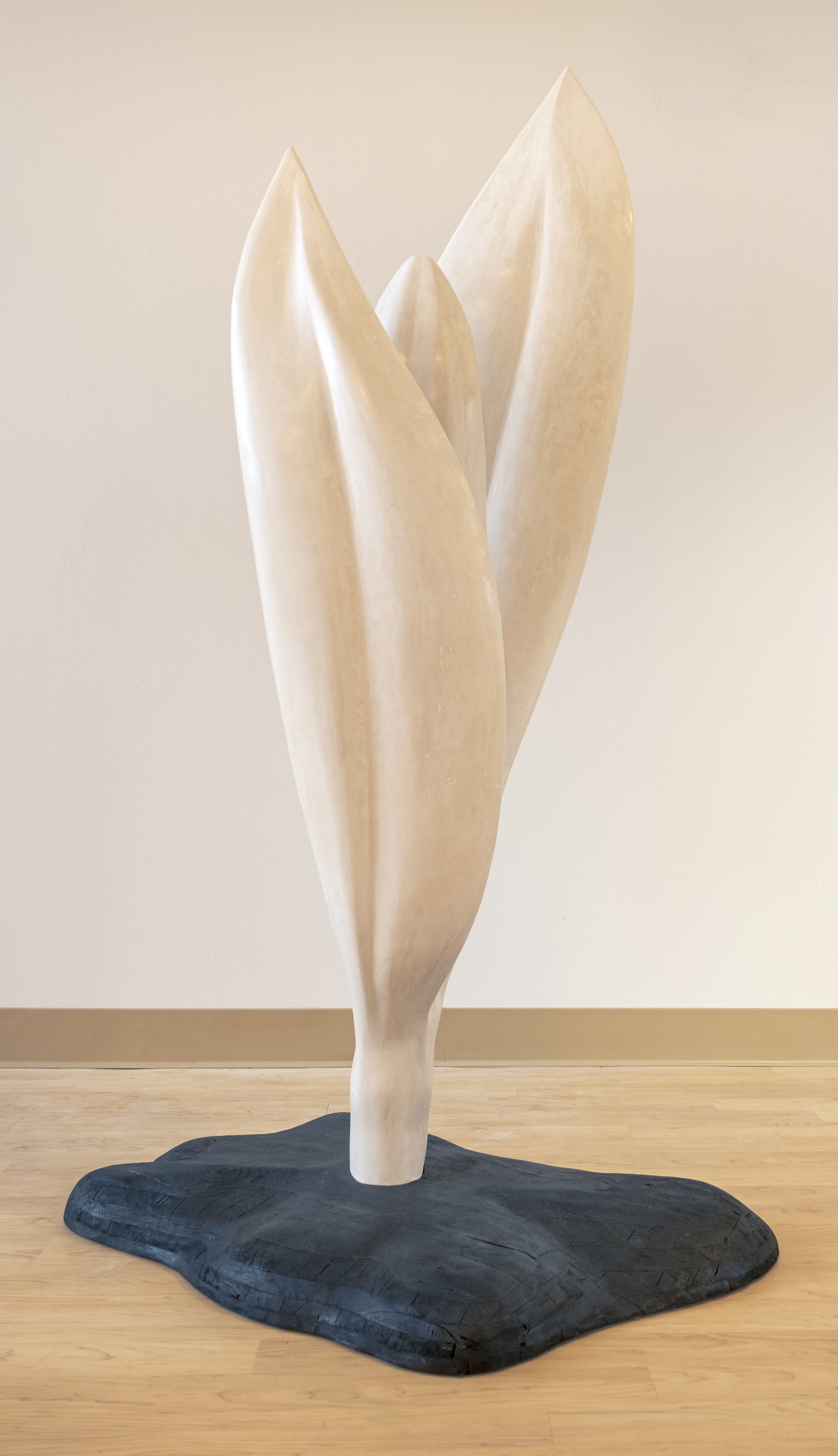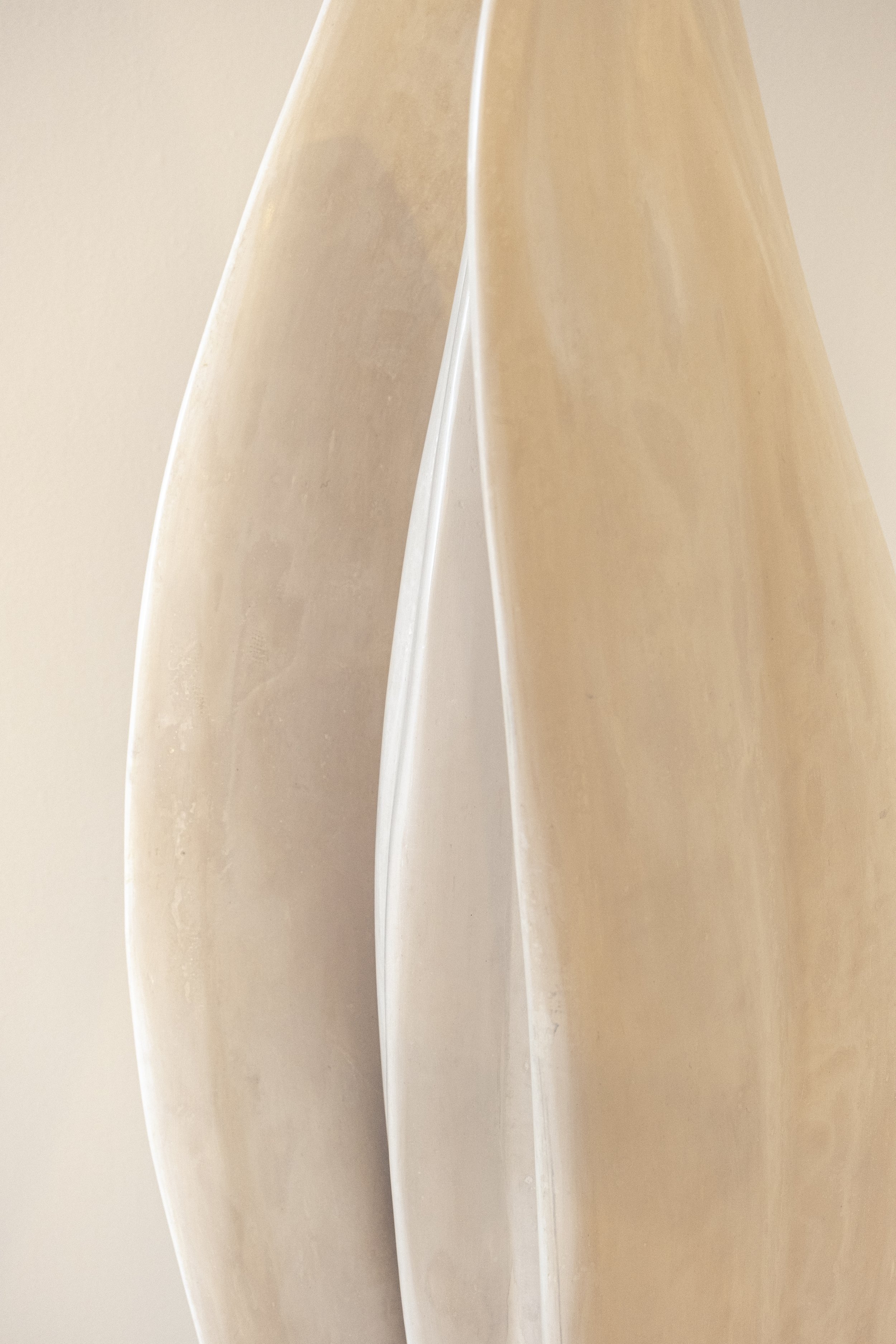An Evolution of Flora
Aqua Resin, wax, styrofoam, steel, wood. 2022.
This project references the botanical illustrations of Philip Reinagle and others for the book Temple of Flora, (Robert Thornton 1799) in which artists were commissioned to paint botanical illustrations of plants in their natural habitat, though the artists had not always seen their subjects in person. What resulted were not always scientifically accurate, but rather romanticized, melodramatic images of giant flowers that the artists hoped would convey the experience of seeing the flora in person. The example of these images demonstrate that human perceptions are subjective, and often tend to distort the environment, exaggerating some things while ignoring others. With this work I pursued the ideal/imagined/abstracted forms of flora that exist mentally rather than a scientific or observational form of a physical plant. If our ideas of nature are not nature itself, then what are they, and where may they lead us?
This piece was designed digitally and carved on a CNC router. There are some interesting parallels between the Temple of Flora illustrations and the use of digital processes today. In the historical examples, many of the artists were separated from their subjects habitats and had to create some of their illustrations based off of descriptions or other drawings rather than physical experience. Similarly, digital design tools encourage artists to work in an idealized digital space, sometimes completely separated from the physical processes of the actual product. This can lead to work which feels more artificial or abstracted, like it was teleported to earth, rather than growing out of the ground. In both cases the separation of the artist from the subject or material places more emphasis on the imagination and internalized perceptions of the artist, which may be more exaggerated, romantic, hallucinatory, minimal or surreal.
Another potential parallel between Temple of Flora and digital processes, is the influence of corporate power. Some of the British desire for botanical illustrations like Temple of Flora was to catalogue, understand and posses the natural resources of newly conquered lands of the British Empire - lands often controlled by private trading companies like the British East India Company. As the handful of leading software companies like Mcneel (Rhinocerous), Autodesk (Fusion 360), Blender, Solidworks and others compete, there are updates and changes to the tools and processes that each company offers in their software. The power that the software companies have over the basic tools of digital fabrication has a significant impact on the way digital artists and designers think. As digital design and fabrication tools evolve and consolidate, it is worth questioning how this impacts the imaginations, processes and artworks of the artists and designers who use them.
This piece was created in conversation with the App Digifab Learning community at Appalachian State University. The work was first shown at the Turchin Center for Visual Arts. Other projects from this exhibition can be found a the Transformations website.


